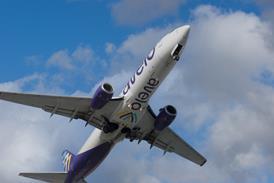The US Marine Corps is experimenting with several ways to provide soldiers on the ground a link to sensor data gathered by the Lockheed Martin F-35 Lightning II and other unmanned aircraft on a tablet computer.
The effort was disclosed by Lt Gen Steven Rudder, deputy commandant of the Marine Corps for aviation, during testimony before a US House Armed Services Committee hearing on fiscal 2019 budget requests for combat aviation programmes. In response to a question by Rep Jim Langevin about the service’s investment in “game-changing technologies,” Rudder pointed to the programme as what he called a simpler but impactful effort.
“We’re doing some experimentation right now out at our weapons tactics squadron with tablets,” said Rudder. “The goal would be, if you look out into the future, that corporal, that squad leader that’s going into the objective area on his tablet he’s got the same information that the F-35 is seeing or any unmanned system in the area is providing.”
The F-35 has several radios that can transmit data, the multifunction airborne data link (MADL), Link-16 and SINGCARS, but lacks the common data link used to transmit sensor data from other Rover-equipped aircraft to the ground.
But the USMC is experimenting with new ways of using the F-35's existing radios to beam sensor data to ground units.
We're "taking all the information that’s being derived from the F-35 series of aircraft", Rudder says. "There are several different efforts out there right now to take all the waveforms (from the F-35) and condense it into the ability to get it down to the corporal on the ground."
Lockheed has equipped the F-35 with four major systems: the Northrop Grumman APG-81 radar, BAE Systems ASQ-239 Barracuda electronic warfare suite, Lockheed electro-optical targeting system and Northrop distributed aperture system. A mission computer in the cockpit then fuses inputs from all four sensors -- as well as data from other F-35s -- into a single picture of the battlefield for the pilot to view. The F-35 pilot can share that picture with other aircraft using Link 16, but it doesn't have a way of directly transmitting that information to the ground.
In the last decade, the USAF has deployed two different aircraft to service as flying communications gateways and relay stations. These two aircraft -- the RQ-4 Block 20 Global Hawk and the Bombardier Global 6000-based E-11 -- translate encrypted messages sent using the Link 16 waveform into messages that can be received by other radios, including communications systems used by ground forces.
Source: FlightGlobal.com


























